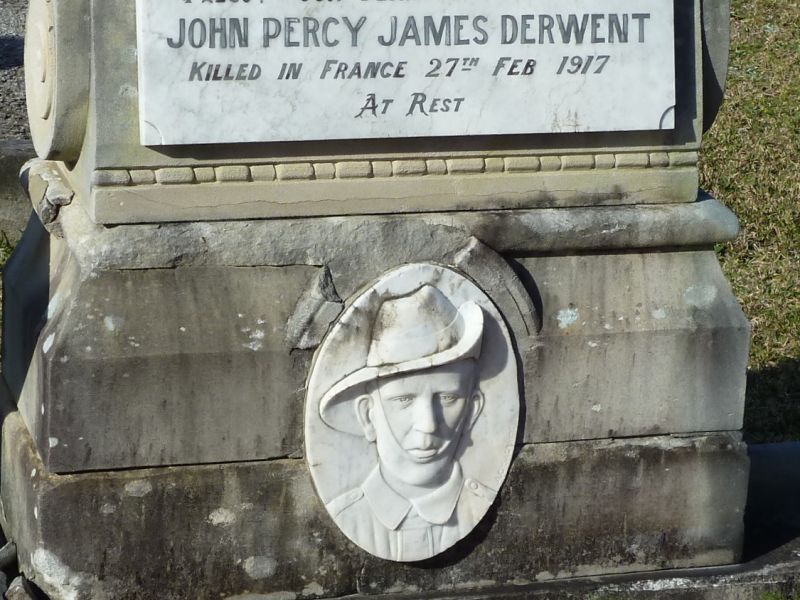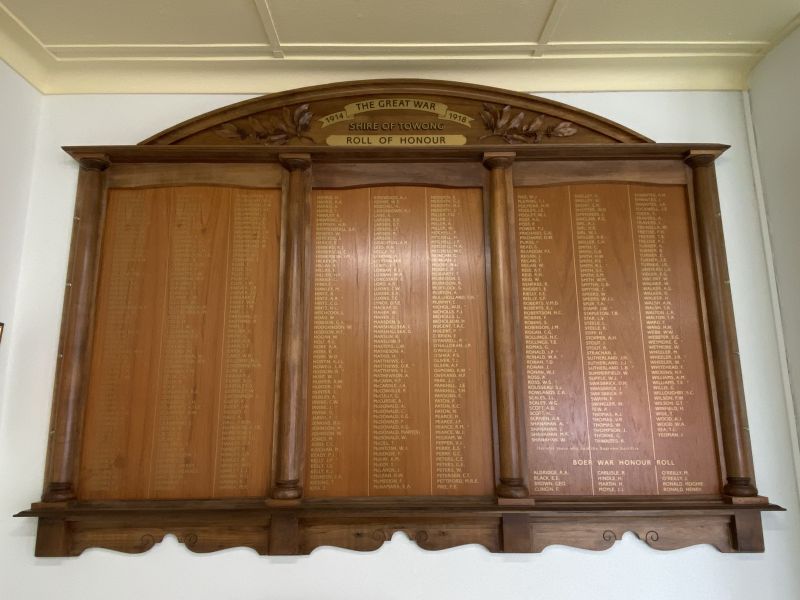John Percy James Derwent
John was born on the 28th of April 1882 at Kogarah, New South Wales, just south-west of Sydney. He was the oldest of eight children of John and Jane (née Kohne) Derwent. John senior was employed by the NSW Railways, working as a head ganger in the Kogarah area. Having to work all hours in any weather resulted in John developing pneumonia. He died on the 21st of August, 1905. Around 1909, John junior moved to the Tallangatta area and gained employment as a labourer in the district.
John enlisted on the 4th of April, 1916, at Tallangatta. At the time he was single, 34 years of age, and working as a laborer. He had experience in the militia, having been a trooper in the 8th Light Horse Regiment for four years. John was placed in the 1st Reinforcements of the 37th Battalion and allocated the Regimental Number 1626. Horace Derrick enlisted on the same day at Tallangatta, being allocated the Regimental Number 1625 and was placed in the same unit as John.
John and Horrace embarked on HMAT A11 Ascanius at Melbourne on the 27th of May, 1916. Fifty-three days later the Ascanius docked at Plymouth in the south of England. After six weeks of training Larkhill on Salisbury Plain, he was taken on strength with the 37th Battalion. On the 22nd of November the battalion were transported across the English Channel to France. Within a week they had begun to occupy the trenches on the Western Front near Armentieres. The winter of 1916-17 was one of the coldest in history with an average daytime temperature of around 2oC.
During the next few months the 3rd Division (of which the 37th Battalion was part) was heavily involved in raiding German trenches. In February the battalion provided 400 troops, with a similar number from the 38th Battalion, to form a special raiding “battalion”. After completing several weeks of training this special battalion staged a 35-minute raid on the night of the 27th of February.
J.A. Durrington was part of the Lewis Gun teams that went out with the raiding party. He provided a witness statement in John’s Red Cross Society Wounded and Missing Enquiry Bureau file.
“Regarding 1626 Pte, Derwent. On the night of 27.2.17 he was a No. 1 of a Lewis Gun team, forming part of a raiding party. We came under heavy fire in No Man’s Land and he has not been seen since. Although search was made night after night, no trace of him could be found. In all probability he has been blown to pieces. He had the appearance of a middle aged man. Was dark and had wrinkled features, In clinde [sic] to stoop.”
In late October of 1917, two small brown paper packages arrived at Bruce Street, West Kogarah, NSW addressed to Mrs J. Derwent. The first contained a wrist watch and strap, writing wallet and a number of photos. The second included a note book, receipt, a damaged electric torch, a rubber stamp and a military book. These were all the wordly affects of Private John Percy James Derwent. Like many who enlisted, John’s war was short but violent.
John has no known grave. He is remembered on the Australian War Memorial Roll of Honour, the Villers-Bretonneux Memorial (Australian National Memorial - France), the Towong Shire Boer War and WW1 Roll of Honour at Tallangatta, and his father’s headstone at Woronora Memorial Park, NSW. For his service he was awarded the British War medal and the Victory Medal.

 Stephen Learmonth
Stephen Learmonth